Matador Network's Blog, page 175
April 27, 2024
Toddler in Tow? Where to Go for a Family-Friendly NYC Vacation.

In my mid-20s, the streets of Manhattan served as the backdrop for adventures to dive bars and late-night restaurant runs. But since then, the borough has transformed for me into a vastly different playground, one more suited to strollers and early bedtimes than 2 AM bodega runs.
After years away (and a move to Denmark), I’ve returned to New York on multiple occasions — not as a resident, but as a tourist, with my baby and Danish husband in tow. The once-familiar city seemed almost completely new when we began looking at it through a family-friendly lens, navigating its bustling avenues and quiet corners as a small family of three.

Photo: fernandoalonsostockfilms/Shutterstock
Visiting NYC now is a chance for our toddler to discover the city that never sleeps — fitting, as our kiddo never seems to sleep, either. Gone are the impromptu late nights, as my version of New York City is now a place that meets our family’s needs for fun, safety, and, perhaps surprisingly, relaxation.
So if you’re looking for the same family-friendly NYC we’ve discovered, one where you can strap on the BabyBjörn and be in good company, read on. You may be surprised by how different the city can be.
Family-friendly offerings on the Upper East Side
Kids can walk through a real Egyptian temple on the Upper East Side of NYC. Photo: Creativity Lover/Shutterstock
The Upper East is east of Central Park, stretching from around 59th Street to 96th Street. The area is famous for its opulence, with elegant pre-war apartment buildings and luxury boutiques lining Madison Avenue. It’s also home to the “Museum Mile” on Fifth Avenue, packed with world-renowned institutions like the Metropolitan Museum of Art and the Guggenheim Museum. It’s not really known for nightlife, making it a good base for visiting families with young kids.
What to do with kidsVisit the Metropolitan Museum of Art, perfect for strolling with a stroller during less-crowded hours and on family days. The sprawling museum has art-making workshops and child-centric gallery tours, and the newly opened 81st Street Studio enhances the experience by providing a whimsical, creative space where babies and young toddlers can engage in multi-sensory activities, including musical exploration.
Carl Schurz Park, on the East River, is a green area with expansive playgrounds segmented by age groups, with scenic paths ideal for the inevitable midday stroller nap. It’s less crowded than Central Park, but at 15 acres, it’s plenty big enough to fill an afternoon.
For a more laid-back day, take a stroll along Madison Avenue. Many shops are surprisingly baby-friendly, and window shopping can be a relaxing way for parents and kids to spend a family-friendly afternoon in NYC. There are also plenty of cafes and rest stops ideal for a break (or diaper change). Changing a poopy diaper somehow seems slightly more glamorous in a Neiman Marcus bathroom. Don’t ask me why.
When it’s time to eat, the Carnegie Diner & Cafe is the classic New Yaaarker diner experience, and just so happens to be exceptionally family friendly. It’s a very down-to-earth diner, with a kid’s menu, high chairs, and classic American comfort food that appeals to all ages, including picky toddlers.
Family-friendly offerings in the West Village and Meatpacking District
Photo: MNAphotography/Shutterstock
Next to one another on the southwestern edge of Manhattan, the West Village and Meatpacking District offer mix of history and trendy vibes. The West Village, below 14th Street, is known for its tree-lined streets, historic brick townhouses, and a bohemian atmosphere. Lots of NYU students live around the West Village, giving it a young vibe.
Just north of the West Village is the Meatpacking District, which has undergone a dramatic transformation. Once a center for meat processing plants and not known for being the nicest part of town, it’s now a chic destination with cobblestone streets lined with high-end shops, trendy restaurants, and stylish bars.
What to do with kidsHudson River Park is home to one of Manhattan’s most expansive playgrounds, aptly located on the Hudson River. This playground offers a variety of equipment suitable for toddlers, including safe climbing structures, swings, and water features perfect for splashing around on warm days.
Chelsea Market is best described as an immersive sensory experience, and it appeals to all ages, making it a superb choice for a family day out, especially when the weather isn’t ideal. It’s easy to navigate with a stroller and offers an array of treats from storefronts ranging from artisanal bakeries to ice cream shops, delighting young taste buds and making it easy for parents who need to occasionally find treats as a baby-friendly bribe.
Many of NYC’s best museums are unexpectedly family friendly, including the Whitney Museum of American Art. Thanks to stroller tours and open studio sessions tailored to families, art is accessible and engaging for young children. The family programs are a chance to immerse little ones in unique cultural and artistic activities while the parents can enjoy a moment of peace amid contemporary and modern art installations. And if your little ones are inspired to bring out their inner artists, you can follow along with the Whitney’s at-home art projects, designed for kids and families.
Gab’s NYC, new to grace the West Village, is known for its welcoming vibe and spacious and colorful dining area. The menu changes seasonally and focuses on sustainable, locally sourced ingredients, making it ideal for families looking to enjoy a relaxed, toddler-friendly meal with a slightly upscale twist.
Family-friendly offerings in Midtown
NYC’s FAO Schwarz is a 20,000-square-foot toy store. Photo: Leonard Zhukovsky/Shutterstock
Midtown is NYC’s central business district and home to iconic skyscrapers like the Empire State Building. It’s also the home of the bright lights and Broadway theaters near Times Square, and Grand Central Terminal. While the exact southern boundary can vary, Midtown generally stretches from 34th Street to 59th Street, encompassing the east-to-west width of Manhattan.
What to do with kidsWhile it may not boast the vast diversity of its Bronx counterpart, the Central Park Zoo is pretty rad in its own right. It has a vibrant assortment of wildlife, from vibrant tropical birds to sea lions. The Tisch Children’s Zoo is a delight, allowing toddlers to interact with and feed friendly domestic animals in an engaging, hands-on environment. And the zoo’s prime location in Central Park provides actual serenity in Zoo York. And trust me, parents will appreciate that, too.
The Museum of Modern Art (MoMA) is yet another family-friendly NYC museum, transforming art appreciation into a child-friendly activity with interactive art sessions, as well as audio guides that talk about complex artwork in ways kids can understand.
FAO Schwarz at Rockefeller Center is more than your typical toy store, offering families interactive experiences in the enormous store. While you’ll be lucky to get out of there without buying your child something, consider it the cost to play on in the whimsical, multi-room store. Don’t miss the chance to walk on the giant floor piano, where children can compose music with their feet, mimicking the iconic movie scene from Big.
Dining in Times Square with a toddler in tow is more fun than you’d think, especially as most kids’ awe at the bustling surroundings is enough to make it seem fun again, even if you were a jaded New Yorker in a previous life. For a fun family dinner, head to Ellen’s Stardust Diner. The 1950s-themed diner is a nod to a bygone era, with lively musical performances by the singing waitstaff. The entertainment is wonderfully kitschy and captivating, and likely to delight the whole fam.
Family-friendly offerings on the Upper West Side
The Upper West’s Museum of Natural History has the largest collection of dinosaur bones in the world. Photo: Ungvari Attila/Shutterstock
The Upper West Side is between Central Park and the Hudson River, and known for its grand architecture, particularly along Central Park West, where the American Museum of Natural History beckons with its dinosaur halls and other fascinating exhibits. But it still maintains a relaxed vibe, with tree-lined streets with brownstones and a fantastic brunch scene. Geographically, the Upper West Side runs from roughly 59th Street to 110th Street along the west side of Manhattan.
What to do with kidsAt the Children’s Museum of Manhattan, tots can engage in educational exhibits on various themes, from environmental science to world cultures. They’re a good way to teach kids that learning is fun, and serve almost like a field trip for the whole family.
The American Museum of Natural History is the spot for kids aged zero to 100, and not just because the area beneath the giant blue whale is an ideal place to crawl. And when it’s nap time, no problem: Head to the Hayden Planetarium and marvel at the universe while your kiddo takes a snooze during the show.
When the kid(s) get hungry, head to Jacob’s Pickles, with gourmet comfort food in a setting receptive to the energetic din of young families. The Southern food menu, featuring dishes like biscuits, fried chicken, and pickles, will likely appeal to many tastes, even those of picky toddlers.
Family-friendly offerings in Lower Manhattan
NYC as seen from Governors Island. Photo: GagliardiPhotography/Shutterstock
Lower Manhattan is the southern tip of Manhattan Island, bursting with history, finance, and iconic sights. It’s generally considered to stretch from the bottom of the island (Battery Park) up to roughly Canal Street or Chambers Street. This area is home to several well-known neighborhoods, each with its own character. Financial giants like Wall Street are in the Financial District, while Tribeca is more about trendy art galleries and high-end shops.
What to do with kidsBattery Park is a necessary stop for young ones who need to burn off energy in the otherwise entirely commercial Lower Manhattan. This green oasis at the southern tip of the island offers stunning views of the Statue of Liberty and ample space for toddlers to roam. The highlight is the SeaGlass Carousel, an underwater-themed carousel with glowing, color-changing fish, instead of traditional horses.
The Skyscraper Museum is also a must-visit if your little ones are fascinated by significant buildings and construction. The museum in Battery Park City offers a toddler-friendly introduction to the towering skyscrapers of New York with plenty of opportunities to touch things. The museum features scale models and interactive exhibits that explain the science and art behind skyscraper construction, meaning parents may geek out, too.
For a family-friendly NYC adventure in pleasant weather, take the ferry from Battery Park to the Statue of Liberty and Ellis Island for a historical outing. This trip can be an exciting adventure for toddlers, involving a boat ride, plenty of open spaces for running around, and some truly monumental photo ops.
One of the ultimate family-friendly restaurants in NYC is in Lower Manhattan at the Collective Governors Island. The pricey glamping retreat is home to Three Peaks, which fulfills most family needs. It serves locally sourced meals (and local beer and cocktails) at the on-site restaurant. It’s refined, but with a large outdoor space, camp theme, and a children’s menu, it caters well to families (and can’t be beat in terms of convenience if you’re on the island). It’s an ideal spot to Manhattan to feed your little one while you enjoy a drink of your own. If you’re visiting for dinner, you’ll need a reservation.
Where to stay in NYC with kids
Photo: BAZA Poductions/Shutterstock
Unless a hotel is explicitly adults only, you can bring kids. But New York is a busy, active, and expensive city, and there are definitely some places where kids are allowed, but not really encouraged. Fortunately, the hotels below are all the opposite of that, with rooms and offerings that cater kids, plus a few extra perks for parents once the kids go down for naptime.
We hope you love the spaces and stays we recommend! Just so you know, Matador may collect a small commission from the links on this page if you decide to book a stay. Listed prices are accurate as of the time of publication.
The Loews Regency New York Hotel (Upper East)
View this post on Instagram
A post shared by Loews Regency New York (Official) (@loewsregency)
This popular hotel has luxury suites with skyline views, ideal for enjoying a glass of wine while the baby rests peacefully. It’s serene and feels like a restful retreat from the bustling city life outside. It’s also only a five-minute stroll from Central Park, providing easy access for playtimes and stroller walks.
The Gansevoort (Meatpacking)
View this post on Instagram
A post shared by Gansevoort Meatpacking (@gansevoort)
The Gansevoort in the Meatpacking District is more than a hotspot for spotting celebs like Leo DiCaprio or J Lo. While it’s stylish, it still retains its playful and surprisingly family-friendly character. There’s a rooftop pool, which offers breathtaking views of the Hudson River and West Village and a necessary respite from the summer heat for the kiddos. It has DJs in the summer, but it’s more of a soft jazz vibe, with lots of families playing in the pool (and parents drinking rosé). The Gansevoort offers cribs and custom care packages to cater to its younger guests, including all the baby essentials. It’s extremely helpful for overstressed parents who neglect something important when packing. (Read: me).
Club Wyndham Midtown 45 (Midtown)In Midtown, the Wyndham is a great pick for families with youngsters visiting the city’s top sights. It’s so close to the action that some balconies offer views of the Empire State and Chrysler Buildings. Suites are equipped with kitchenettes, allowing families the convenience of preparing meals and snacks in their rooms to save time and money while sightseeing. The rooms are uniquely spacious, with easy access to family-friendly attractions. Voila: it’s Manhattan at your fingertips.
The Mandarin Oriental New York (Upper West)
View this post on Instagram
A post shared by Mandarin Oriental, New York (@mo_newyork)
The Mandarin Oriental New York Hotel on the Upper West offers an array of amenities tailored for what it calls “Little Fans.” (Ask about the available in-room teepee tents and cooking-decorating kits). It also has essential items such as cribs, high chairs, and baby bibs, along with activity offerings like swimming lessons at the large indoor pool. The hotel also has vetted babysitters available so parents can enjoy offerings like spa treatments or a gourmet meal.
Collective Governors Island (Lower Manhattan)
View this post on Instagram
A post shared by Collective Retreats (@collectiveretreats)
This tented hotel offers one of the best urban glamping getaways for families just a short commute from Lower Manhattan. The resort has green spaces with actual space, since Governor’s Island has yet to be oversaturated with tourists. But it’s great for families, as the 172-acre island is entirely walkable and bikeable (or stroller-able). Collective Governors Island is enclosed, so kids can safely explore and play while parents relax. The best part? The resort hosts nightly bonfires where everyone can gather for s’mores against the stunning backdrop of the Statue of Liberty and Manhattan skyline. 
April 26, 2024
This Map Shows How Far You Can Travel Europe by Train in 8 Hours or Less

There’s plenty to say about riding the train being a better way to travel than flying, especially in Europe: It’s more convenient, it’s more comfortable, there’s no luggage restriction, there’s no security line, it’s better for the planet, etc. One aspect of train travel that worries travelers, however, is how long it takes to get from one place to another. While some train routes, like the Eurostar between London and Amsterdam, or the high-speed train that runs between Paris to Zurich, are just as fast as flying, riding the rails can sometimes be slow.
Pressed-for-time travelers who like to plan their train trips well ahead, as well as those who fancy spontaneous day trips to unknown destinations, can make good use of Chronotrains’ fantastic interactive map which shows how far you can travel in eight hours or less by train anywhere in Europe. By just hovering your mouse above a point on the website’s isochrone map, you can see the areas you can visit by train within a certain time period, with one hour being the minimum and eight hours being the maximum.
 How far you can travel from Paris by train in eight hours. Map: Chronotrains
How far you can travel from Paris by train in eight hours. Map: Chronotrains How far you can travel from Paris by train in five hours. Map: Chronotrains
How far you can travel from Paris by train in five hours. Map: Chronotrains How far you can travel from Paris by train in two hours. Map: Chronotrains
How far you can travel from Paris by train in two hours. Map: ChronotrainsOnce you’ve chosen your point of departure, you can zoom in on the area and see all the destinations at your disposal within the time frame you selected, with the route highlighted in blue, the exact time it takes to get there displayed, etc.
The maps below show all the train travel options from Paris within an eight-hour time period, including lesser-known and underrated French cities like Brest and Reims, as well as international destinations like Barcelona, Amsterdam, Berlin, London, Luxembourg, etc.
 All the cities you can travel to by train from Paris, including Barcelona. Map: Chronotrains
All the cities you can travel to by train from Paris, including Barcelona. Map: Chronotrains All the cities you can travel to by train from Paris, including Amsterdam. Map: Chronotrains
All the cities you can travel to by train from Paris, including Amsterdam. Map: Chronotrains All the cities you can travel to by train from Paris, including Berlin. Map: Chronotrains
All the cities you can travel to by train from Paris, including Berlin. Map: Chronotrains Paris to Brest by train. Map: Chronotrains
Paris to Brest by train. Map: Chronotrains Paris to Reims by train. Map: Chronotrains
Paris to Reims by train. Map: ChronotrainsOnce you’ve chosen your destination, Chronotrains will give you an idea of the price that your trip will cost and provide the links to the websites you need to make a booking.
While chronotrains does not display every rail route and every single train station in every European country, it’s still a valuable tool to plan a trip, especially if you’re a Eurail Pass holder who has access to unlimited train travel. 
The Disappearing-Art Buddha Board Keeps My Toddler Occupied on Long Travel Days

When my daughter Margot was born, my wife and I made a promise that we would still travel as much as possible and take advantage of free or discounted flights for babies under two. We held to that promise more than we thought we’d be able to — Margot has already taken 20 flights from coast-to-coast and to three countries, with two more international trips scheduled before we have to start paying full prices for her.
That said, we’ve quickly learned that it’s a lot harder to keep a toddler entertained on long flights and during travel downtime than it is a newborn. No one toy, book, or tip (applying and ripping off tape is a longstanding hit) can entertain a 17-month-old for long. A mini Buddha Board has made its way into our must-pack list as something that holds her attention more than most.
Buddha Board makes canvases that respond to water brushstrokes. As those brushstrokes dry over the course of up to 10 minutes, they disappear and the drawer is ready to start again. It’s billed as a type of mindful meditation — the name is a reference to the Buddhist principles of impermanence and letting go.
I’m not sure mindfulness is what’s going through Margot’s head as she swishes the brush this way and that, but it certainly holds her attention. She’s always eager to show us her work before it goes away forever (yes, my camera roll of Margot’s drawings has taken the place of putting things on the fridge, and then some). Importantly, it avoids marker stains, can’t be eaten like a crayon, won’t rip like a coloring book, and takes no clean up other than wiping up any spilled water.
Plus, the five-square-inch board fits easy in my backpack next to whatever magazine I’m taking along with me.
We hope you love the products we recommend! Just so you know, Matador may collect a small commission from the links on this page if you decide to make a purchase.

Photo: Nickolaus Hines
Buy NowThe mini Buddha Board has a notch to hold the brush and a tray that can hold just enough water for a drawing (when accounting for spills). We’ve pulled it out in hotel rooms as we got ready and set it on the tray table during long flights. Admittedly, the jerky movements of a child make spilling inevitable. But with a water-loving baby like Margot, spilled water is just a fact of life.
The company doesn’t recommend using fingers or anything but a clean brush to paint on the board. Oils can permanently damage the surface. Little toddler fingers will do what little toddler fingers do, however, and our Buddha Board has held up well to a couple months of hard use. I know it’ll have a permanent spot in my carry-on for many trips to come. 
Stock Up For Summer Adventures With These Rock-Bottom REI Outlet Deals

Summer trail and beach season is upon us. This weekend you can take advantage of a massive sale at REI Outlet to ensure you’re stocked and dressed for success this year, with massive discounts on name-brand outdoor gear and clothing from companies including PrAna, Vasque, and Outdoor Research. Check out the full rundown. Also available through April 29, REI members can take advantage of a free $20 digital gift card when they buy a gift card of $100 at REI.com right now. That quick math you just did in your head is correct – buy a gift card for yourself, and get $20 more for free. Here are Matador’s top picks from the sale (and check out the full rundown).
We hope you love the deas at this REI Outlet Sale! Just so you know, Matador may collect a small commission from the links on this page if you decide to make a purcahse. Listed prices are accurate as of the time of publication.
Alpine Mountain Gear Weekender Tent 6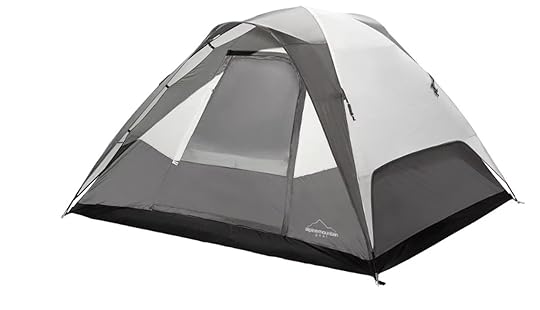
Photo: REI
Getting a new tent at the start of camping season is the perfect way to motivate yourself to actually get out there this summer. If car camping with a family or small crew, this tent from Alpine Mountain Gear is perfect – it can fit up to six people, but is perfectly comfortable for three to four people with gear. The 2-pole quick-up design sets up in a few minutes and that includes adding the rainfly. Even if you have a full family, the gear loft ensures everyone has space to put their pack and basics – you’ll just have to ration time on the included power port.
Price: $81.73, normally $199.99
Specs:
Sleeps 6 peopleWeighs 13 lbs. 8 oz.Has 1 doorBest for 3-season campingMeasures 120 x 108 inches on the floorHas a peak height of 68 inchesMade with fiberglass polesDragon Eden Glasses
Photo: REI
Dragon is a top name in winter eyewear, and the brand’s Eden Glasses extend that reputation throughout the year. The frame is made of Injection-molded recycled PET and the lenses offers 100 percent UV protection. These sunglasses actually look good on both men and women, and are designed to pair well with outdoor clothing and gear. You’ll not only see well, you’ll feel just as smooth.
Price: $57.73, normally $145
Vasque Torre AT GTX Hiking Boots – Women’s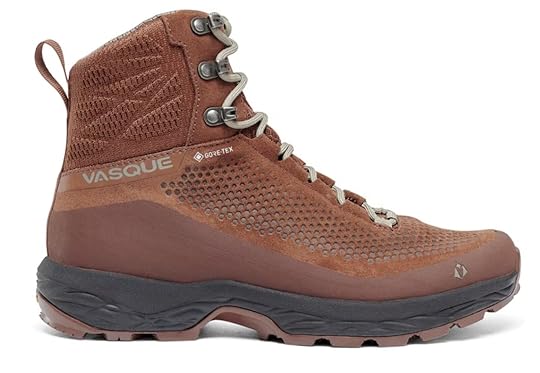
Photo: REI
The Vasque Torre AT GTX hiking boots are waterproof and lightweight, designed for comfort and performance. They are made of suede leather and mesh. Of particular note are the All Terrain Compound mid-soles with cushioning pods that allow you to step with confidence whether on a damp trai in the Pacific Northwest or a rocky outcropping in the Utah desert. TheVibram® Wavelength II outsoles feature extra grip designed specifically for loose terrain, so even if you’re hiking in the spring or fall when various types of moisture keep trais inconsistent, the boots will help you climb and descend at a steady rate with confidence.
Price: 4179.23, normally $220
Mountain Equipment Starlight I Sleeping Bag – Men’s Long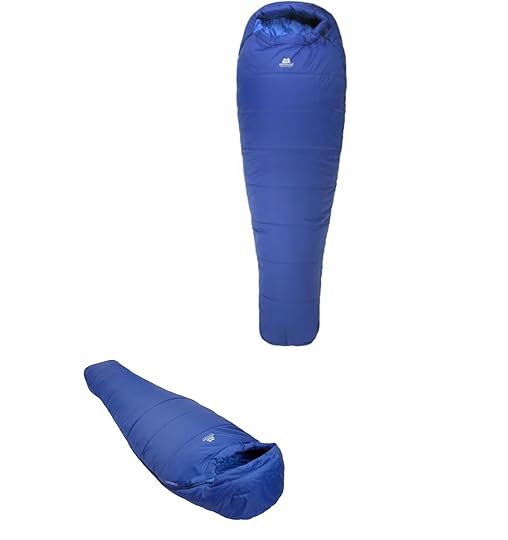
Photo: REI
A two-pound sleeping bag is a win for camping trips. Finding one that is rated to 41 degrees (lower if you add a liner) that is also anatomically shaped with a full-length zipper is a season-changer. The Mountain Equipment Starlight I ticks all those boxes. It also looks good, in case you find yourself cozied up adjacent to a striking morning view and your camping partner can’t help but to take a photo of you sleeping with the sun rising beyond. Don’t worry – the mummy top will mask your ragged hair.
Price: $85.73, normally $215
Outdoor Research Helium Wind Hoodie – Women’s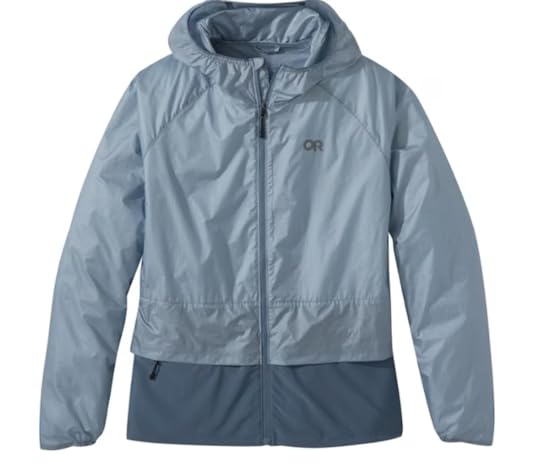
Photo: REI
A wind hoodie built for activewear should do three things quite well. First, it should fit tight to the body so that it moves with you. Second, it should have adjustable straps, hood, and other doo-dads so that it’s easy to fit it properly. Lastly, it should do all of this without sacrificing comfort, style, or its ability to be waterproof. The Helium Wind Hoodie from Outdoor Research does all these things, with the current bonus of being severely discounted. It’s on closeout at REI, so snag this jacket now before it’s sold out.
Price: $59.73, normally $119
Tommy Bahama Deluxe Rush Lifeguard Hat – Men’s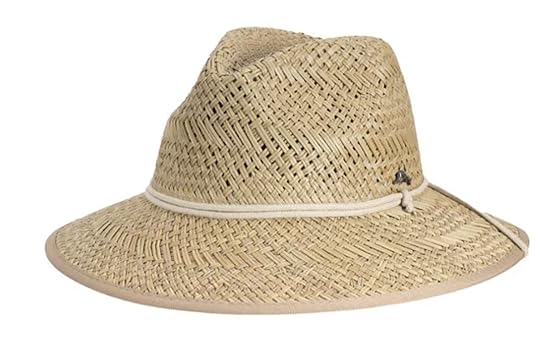
Photo: REI
When it comes to practical uses in the wilderness, this hat won’t top your list. But for chill beach days, trailhead beer sessions, and travel days, it’s as useful an accessory as any. It has an elasticized COOLMAX sweatband, after all. Tommy Bahama knows a thing or two about the beach, so it’s no surprise that REI looked its way when in need of a solid lifeguard hat. Grab it now while it’s on clearance.
Price: $23.73, normally $60
Outdoor Research Astro Shorts – Men’s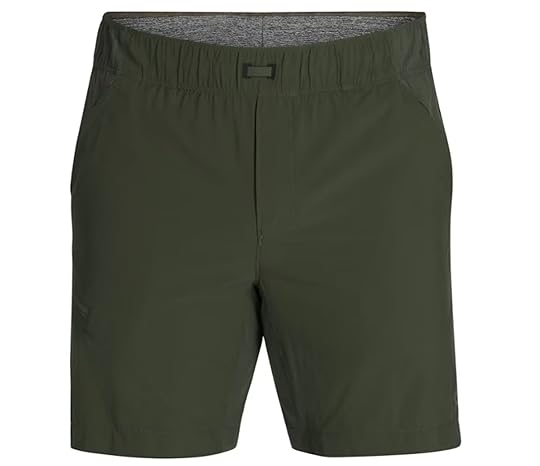
Photo: REI
Outdoor Research Astro Shorts are pull-on shorts made from the brand’s lightweight, stretchy, and durable Astroman and Ferrosi fabrics that makes them suitable for various environments and weather conditions. There’s also UPF 50 sun protection included. Fortunately, they also look pretty darn cool and match with plenty of outdoor clothing, so you’ll look as good on the trail as you do at happy hour afterward.
Price: $48.73, normally $79
PrAna Sky Canyon Jogger Pants – Women’s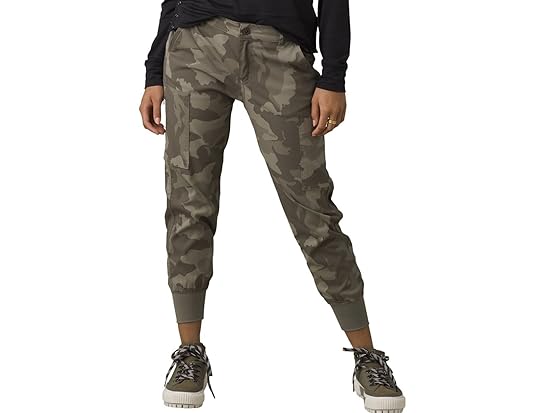
Photo: REI
Joggers (yoggers, as they’re known around here — it’s a “soft J”) are useful for so many things. Jogging, of course, but also gym sessions, chilling on the porch, and other casual revelry where the intended goal is function and comfort over strict fashion. These PrAna joggers are super comfy, stretchy, and not too thick, so you won’t be sweating into your socks the entire time you’re out on the run. The UPF 50 sun protection and water-repellant surface are a nice finishing touch.
Price: $27.73, normally $89
Freewaters Becca Print Flip-Flops – Women’s
Photo: REI
It’s officially flip flop season. If you’re like this Matador editor, you work through a pair each year, and while end-of-season sales are often a good time to pick up a pair for next year, this year you don’t have to get down on yourself for missing out last fall. Grab these Becca Print Flip-Flops and stroll in style all summer long. 
$11.73, normally $30
More like thisBackpackingThe Ultimate Summer Backpacking Gear Guide7 Places for the Best Lake Diving in the US

When most people think about scuba diving, they think about tropical destinations, clear water, and boat rides in the sunshine to reach coral reefs or underwater rock formations. But if you live near one of the lakes below popular with scuba divers, you may be surprised to realize that some of the best diving in the US is far from any ocean coastline. Lake diving can be more varied, more exciting, and more adventurous than your standard coral reef drift dive, and comes with the added bonus of getting to visit some of the prettiest lakeside destinations in the US.
Today, more and more divers are realizing the beauty of lake diving: diving in fresh water in more inland locations. These often challenging and rewarding destinations are ripe for underwater photography and once-in-a-lifetime adventures in otherworldly landscapes, sometimes surrounded by dramatic backdrops like alpine forests or rocky cliffs and gorges.
These are seven of the best lake diving locations in the US, plus the run-down on what skills and equipement you’ll need for each one, as well as recommended dive shops.
Diving in Lake Tahoe (California and Nevada)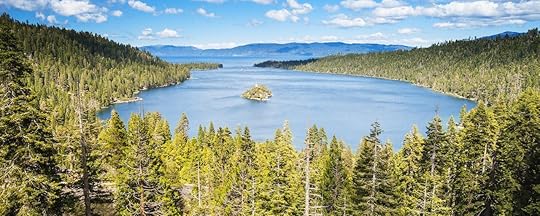
Photo: somchaij/Shutterstock
Lake Tahoe covers nearly two hundred square miles on the intersection of California and Nevada. While the towns around Lake Tahoe are more known for sports like skiing and hiking, the lake itself is actually quite popular with area divers.
There are a few places to scuba dive in Lake Tahoe, but Emerald Bay is probably the most impressive underwater attraction. You’ll dive next to submerged trees from a rockslide in the steep canyon, over a dumping ground for the historic Emerald Bay Resort (closed in the early 1900s), and along a purpose-build underwater trail. It’s called the Emerald Bay Maritime Heritage Trail and includes dozens of vintage artifacts and the remains of several historic boats.
In total, there are four dive sites at Emerald Bay. On the Barge Dive Site, you’ll find the remains of two massive barges used by Tahoe’s lumber companies in the 1800s, while the other three sites (Passenger Launch, Wooden Fishing Boat, and Hard Chine Skiff) show off the history of Emerald Bay Resort. And Tahoe’s cold, still water helps keep everything very well preserved.
Lake Tahoe sits about 6,200 feet above sea level and is cold year-round, even in summer. While you can get away with a 7-mil wetsuit (plus a hood, gloves, and booties), almost all divers dive in drysuits. So you’ll need your own drysuit, or need a drysuit certification to rent one. While the dives at Emerald Bay aren’t particularly deep, maxing out at about 60 feet, there are deeper dives in other areas of the lake that require an advanced open water certification.
View this post on Instagram
A post shared by Tahoe Dive Center (@tahoedivecenter)
You also need experience diving at altitude. The math gets complicated, but essentially, since the pressure at Tahoe’s surface is less than the pressure at sea level, you need to readjust the calculations for how your body will respond to gas at depths. The long and short of it is that you can easily get the bends if you treat it like a dive at sea level. There are also no decompression chambers around the lake if you make a grave mistake.
There’s only one scuba diving shop in Lake Tahoe, on the Nevada side near the south shore. It’s called Tahoe Dive Center and runs dives from roughly May to September. You can also find shops with experience diving in Lake Tahoe in Reno, Nevada, about 35 minutes away from the lake. Good Reno options include Adventure Scuba or Sierra Dive Center.
Diving in Ginnie Springs (Florida)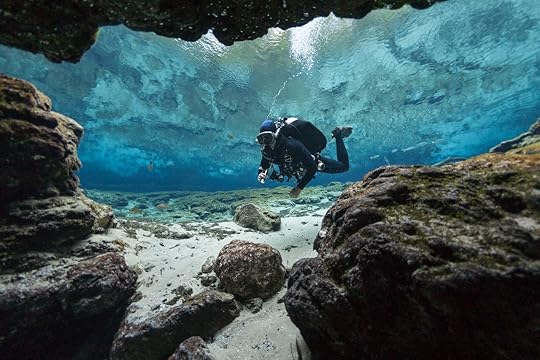
Photo: Valerijs Novickis/Shutterstock
Northern Florida is often referred to as “cave country” by in-the-know divers, and Ginnie Springs is considered a world-class freshwater site. It’s one of the region’s most spectacular cavern diving sites with options to suit every skill and comfort level. Ginnie Springs is also an excellent choice for divers hoping to log multiple days in the water, with tent camping and cottages for rent near the spring, as well as a full-service dive center on the property.
Ginnie Cavern is a massive and open underwater formation that even newly certified divers can safely explore. In the upper chamber, expect to see panoramic views of naturally illuminated and highly reflective limestone. Head a bit deeper to the Ginnie Ballroom, and you’ll see fascinating rock patterns dotted with thousand of tiny impressions that some say resembles Swiss cheese. Divers will need lights, but since Ginnie Cavern has a huge opening and is quite shallow (the Ballroom maxes at 50 feet deep), it’s one of the few places in the US where divers can experience a cavern without any formal cavern diving training.
View this post on Instagram
A post shared by Ginnie Springs Outdoors (@ginniesprings)
Ginnie Springs is part of a larger cavern system that includes Devil’s Eye, Devil’s Ear and Devil Spring, all of which are limited to cave- and cavern-certified divers. You can also do drift dives when the water level is high enough in the Santa Fe River. While diving, look along the riverbed for supersized fossils, including ground sloths from the Pleistocene Era.
You can rent dive gear on site at the full-service dive shop and a full setup with lights will set you back $70 for the day. You can also book guided dives through nearby outfitters like Crystal River Kayak Company, but since it’s easy diving and a contained site, most people just go on their own. If you’d like to get certified or work on your cavern certification, the on-site shop works with instructors at Cave Max to do instruction at Ginnie Springs, too.
Diving in Lake Huron (Michigan)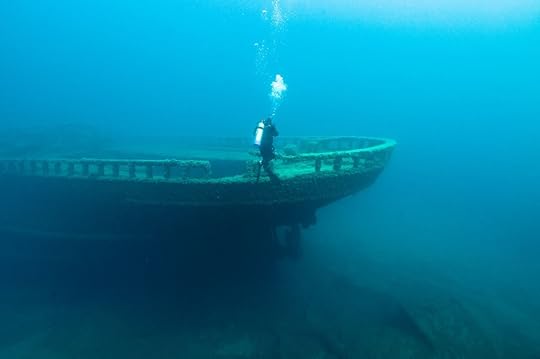
Photo: Love Lego/Shutterstock
Sometimes referred to as “shipwreck alley,” the massive underwater marine preserve called Thunder Bay in Michigan’s Lake Huron is home to more than 100 shipwrecks, dating from the 1850s through to the 1960s. Most were lost to collision or accidental grounding, and today, tell the story of this region’s shipping and mercantile past. Divers can tour sunken hulks ranging from wooden steamboats and schooners to modern steel freighters, with depths and dive site conditions for all skill and certification levels (including technical exploration hundreds of feet below the surface). Lake Huron’s visibility can top out at 80 feet, making it a beloved wreck diving destination for underwater photographers and videographers.
The Thunder Bay National Marine Sanctuary is best dived by boat, making it easy to hit all the park’s best wrecks in just a few days. Some of the most desirable sites here include the ruins of the Windiate, Kyle Spangler, Defiance, and Audubon, each worth at least a few dives for internal and external exploration. You’ll find several dive centers around the Great Lakes, each offering guided exploration and scuba courses, plus rental equipment and tank fills. Some of the closest shops to the sanctuary include Huron Scuba, Nautical North Family Adventures, and Great Lakes Divers, among many other options.
View this post on Instagram
A post shared by Becky Kagan Schott (@becky_kagan_schott)
Drysuits aren’t mandatory, though they are recommended. Hearty divers doing just a dive or two can probably get away with a 7-mil wetsuit in the summer, though throwing an extra 3-mil vest on top of that wouldn’t hurt.
On your way to or from diving, you may want to stop by the Great Lakes Maritime Heritage Center. The exhibits, artifact galleries, and archaeological conservation lab are loaded with insight into the region’s wrecks, and history. There’s also a visitor center in the nearby town of Alpena with extensive information about the marine sanctuary and shipwreck alley.
Diving in Clear Lake (Oregon)
Photo: Joe Klune/Shutterstock
Have you ever dreamed of scuba diving in a submerged forest? Some of the underwater landscapes at Oregon’s Clear Lake are absolutely otherworldly, allowing divers to weave around towering tree trunks in submerged forests and peer into “potholes,” where you can see ice-cold underwater springs pumping out water from deep below the earth’s surface. Visibility is usually quite good, averaging around 100 feet. There are a few places to dive in the lake, with most divers going no deeper than 50 or so feet.
Diving at Oregon’s Clear Lake is easy, with shore access that requires just a short walk from the parking area. Diving here is pretty relaxing, since no motorized watercraft are allowed on the lake. In addition to its fascinating topography, this site is home to freshwater fish and shrimp, with curious trout often approaching divers for a closer look.
View this post on Instagram
A post shared by Oregon Scuba Diving (@adventure_sports_scuba)
This is one of the coldest lake diving destinations on this list, with average daily temperatures in the 30s and 40 degrees Fahrenheit. Drysuits and regulators designed for cold water are mandatory (so don’t bring your warm-water, tropical dive gear), but freeze-ups can still happen. Like Lake Tahoe, it’s also an altitude dive at more than 3,000 feet above sea level, so you’ll need to adjust your dive profile for elevation. You should be an advanced open water diver and confident on handling underwater emergencies, especially as there are no dive shops nearby. So you’ll need to be entirely self-sufficient (though there is a restaurant at the Clear Lake Resort).
Scuba diving in Lake Jocassee (South Carolina)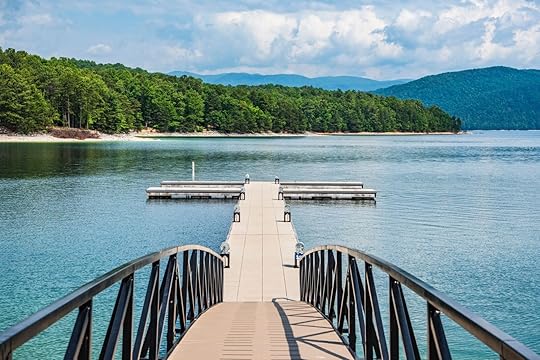
Photo: Kevin Ruck/Shutterstock
Lake Jocassee, a reservoir tucked away in a park in South Carolina’s Blue Ridge Mountains, offers a surprisingly world-class scuba diving experience. Regularly cited as one of the top 15 freshwater dives on the planet, the lake boasts exceptional water clarity, with visibility often exceeding 50 feet.
Lake Jocassee’s is a flooded river valley, with an unexpectedly varied submerged landscape. Divers can navigate past submerged rock outcroppings, descend alongside sheer underwater cliffs, or explore sunken forests where fish weave between fallen logs. Deep wall dives are available to challenge experienced technical divers (like the 70-foot-deep South Wall), while shallower sites like Jenny’s Drift are a good introduction to lake diving (and SC’s fish population). Also dotted across the lakebed are sunken houses, relocated cemeteries, and even a shipwreck, called the “Junk,” resting at a depth of 60 feet.
Water temperatures in Lake Jocassee fluctuate with the seasons. While the surface can reach comfortable levels in the low 80 degrees Fahrenheit, temperatures drop significantly with depth. Most divers wear drysuits year-round, but especially outside of the late summer/early fall.
View this post on Instagram
A post shared by South Carolina State Parks (@scstateparks)
Despite being a freshwater ecosystem, Lake Jocassee has plenty of aquatic life. Divers can expect to encounter a variety of fish species, including largemouth and striped bass, bream, crappie, and catfish, plus the potential to spot freshwater mussels, crayfish, and even the occasional shy turtle.
Lake Jocassee diving is usually arranged via nearby operators, since there’s no scuba shop within Devil’s Fork State Park. However, there are plenty of nearby shops that offer rentals and/or guided trips, including The Scuba Shop, Scuba Johns, Lake Jocassee Dive Shop, Dolphin Dive Center, and many more.
Diving in Lake Travis (Texas)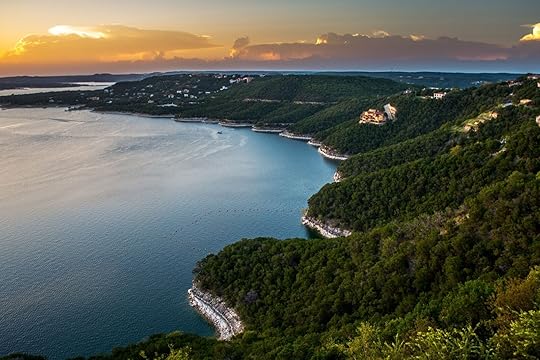
Photo: UjwalG/Shutterstock
Lake Travis, a reservoir on the Colorado River west of Austin, Texas, provides a unique but challenging scuba diving experience. Visibility can be good if you’re lucky but usually averages around 15 to 30 feet, depending on recent weather. But it barely matters, since the primary draws are the lake’s historical artifacts and submerged structures. The underwater landscape consists of natural rock formations, underwater cliffs, and man-made structures like those at a site called Starnes Island, known for its wall dives and sunken boat hulls.
At Windy Point, divers can find underwater sculptures, and at West Point, be sure to look for the old washing machine and other domestic remains. Popular with experienced divers is the eerie Fiesta Haus Wall, a deep site with a large grotto. And at Wreck Alley, divers can encounter sunken boats and barges – remnants of the lake’s history as a popular recreational area.
The season for scuba diving in Lake Travis is relatively long, spanning from spring through fall for most divers (though you can dive it year-round). Diving Lake Travis is generally warmest in the summer, reaching the mid-80s Fahrenheit at the surface. However, due to the lake’s depth, temperatures drop rapidly. Drysuits are recommended year-round to maintain comfort during dives, though you’ll find a decent amount of people wearing seven-mils with hoods and gloves/booties in the summer.
View this post on Instagram
A post shared by Scott Bauer (@scottbauerbelow)
The difficulty of diving Lake Travis varies depending on the location and depth. Shore entry is available at some sites, but many require boat access. Dives range from shallow depths suitable for beginners to deep wall dives exceeding 100 feet, which are appropriate for experienced technical divers only. Strong currents can be present at some locations, and proper buoyancy control is essential throughout the dive. Flashlights are recommended, owing to the iffy visibility.
Scuba Diving in Lake Michigan (Midwest)
Diving the Fred McBrier, in the Straits of Mackinac, in northern Lake Michigan. Photo: Dan Lindsay/Shutterstock
Lake Huron isn’t the only Great Lake popular with scuba divers. Scuba diving in Lake Michigan is an awesome adventure for cold-water divers, with excellent visibility sometimes exceeding 80 feet (but usually closer to around 40). While the frigid water temperatures are a major hurdle, the payoff is worth it for many divers.
Scuba diving Lake Michigan is a draw for divers who like shipwrecks, as the lake’s minimal currents and freshwater mean hundreds of wrecks are well-preserved. The wrecks range from shallow wooden schooners to massive steel freighters, some dating back more than a century. Popular dive sites include the SS Palo Alto, a WWI freighter resting at 100 feet; and The Rouse Simmons, resting at about 150 feet. Both are suitable only for advanced open water divers. But sites like the Yuba Wreck (15 feet deep) and the Lady Elgin (45 feet deep) are popular with beginners.
The diving season is compressed due to the extremely cold winters. Dives are generally restricted to the summer months, from July to August for most divers. Diving in Lake Michigan is always cold, with water temperatures at the surface maxing out around 70 degrees Fahrenheit, meaning it’s much colder at depth. A seven-mil wetsuit may be okay for one summer dive on a hot day, but you’ll want a drysuit otherwise.
View this post on Instagram
A post shared by Jitka Hanakova (@shipwreckexplorersllc)
Lake Michigan spans four states (Wisconsin, Michigan, Illinois, and Indiana), and because it’s so big, you can dive from a few different towns. If you’re diving in the Grand Traverse Bay Underwater Preserve, you’ll want to work with a dive shop in Traverse City, Michigan, such as Scuba North. Otherwise, most of the major cities around Lake Michigan have shops that offer rentals, classes, and guided trips to scuba dive Lake Michigan, including Shipwreck Explorers or Aquatic Adventures, both based in Milwaukee; Berry Dive Center, about 20 minutes north of Chicago in Evanston, IL; or Shipwreck Adventures, in Two Rivers, WI.
This article was first published in August 2021 and updated in April 2024.
Cash for Cancellations: New DOT Rules Are Making Airline Refunds Easier

Until recently, the rules surrounding flight compensation in the event of delays and cancellations have been murky at best, with domestic airlines deciding terms for reimbursement independently. Earlier this week, the Department of Transportation (DOT) announced a new set of rules that serve to standardize when and how airlines are required to issue refunds to passengers.
According to a DOT release, passengers who experience significant flight disruptions will now receive “automatic” and “prompt” cash refunds from airlines. Examples of refundable disruptions include flight and baggage delays, cancellations, and notable changes to bookings, such as rerouting passengers to a different departure airport or adding extra connections. Failure to provide paid-for services such as in-flight WiFi or seat upgrades also necessitates refunds.
Airlines may still offer alternatives to passengers, including new flights or travel credits, but if denied, they’re required to provide refunds for the full amount of the original fare. Failure to provide paid-for services such as in-flight WiFi or seat upgrades also necessitates refunds.
As part of these new rules, the DOT is clearly defining what constitutes a significant flight delay across US airlines for the first time: Passengers whose departure or arrival times are pushed back by more than three hours on domestic flights, or six hours on international flights, will be reimbursed in full. Checked bag fees must also be refunded if baggage is delayed for more than 12 hours on a domestic flight or 15-30 hours on an international flight, depending on the route.
That airlines were previously allowed to set their own standards for “significant” delays and disruptions posed challenges for passengers. Not only did it put the onus on travelers to instigate the reimbursement process, but it also forced passengers to navigate confusing policies and withstand long, drawn-out communiques with reluctant airlines. Rather than monetary compensation, this often resulted in reimbursement via travel credits or vouchers.
According to US Transportation Secretary Pete Buttigieg, the new rules are intended to help passengers get the refunds they’re owed without “headaches or haggling.”
As an alternative to immediate cash refunds, passengers are eligible for reimbursement in the form of their original method of payment, including credit card purchases or airline-mile redemption. If reimbursed via credit card, passengers can expect to see full refunds within seven business days. The standard for other forms of payment is now 20 calendar days.
As part of the promise to refund passengers in full, travelers should also note that refunds are due for the total amount of what they originally paid, including taxes and fees. 
Embrace Summer Nights on Tennessee’s 9-Stop Stargazing Trail

The Tennessee Night Sky Trail takes you through Northeast Tennessee and the Appalachian Mountains. The celestial road trip makes a perfect getaway to explore the area. It’s drivable, so all you need a vacation rental near the mountains, and after the sun goes down, you can head out and enjoy Tennessee’s pristine night sky.
The trail encompasses nine locations, each offering a quality vantage point for observing the cosmos. From panoramic vistas atop mountainsides to the serene tranquility of lakeside spots to a modern observation deck, whether you’re a seasoned astronomer, astrophotographer, or a new stargazer with little gear, the Tennessee Night Sky Trail caters to all experience levels. So grab your star chart, bundle up, and head out to these remote dark sky locations.
Tennessee Night Sky Trail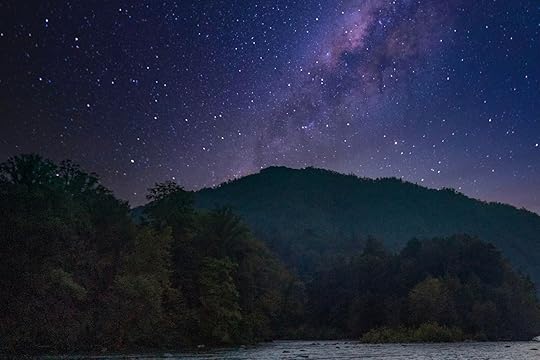
Photo: Johnson City Aerial Photography
Check out the Tennessee Night Sky Trail website for an interactive map. These are nine of the designated stargazing locations scattered across Northeast Tennessee.
Viking Mountain, GreenevilleViking Mountain, also known as Camp Creek Bald by some, is located within the Bald Mountains, straddling the border between Tennessee and North Carolina. The Appalachian Trail threads its path just beneath the summit, and it’s one of the best places in the state for stargazing. You’ll need a 4WD to access this spot in rain or snow, and it’s advised to come during the day so that you can make a camp and check out your bearings.
Viking Mountain: Viking Mountain Rd. to Bald Mountain Rd., Greeneville, TN 37743
Crockett Springs Park, downtown RogersvilleAfter an afternoon exploring Rogersville’s historic downtown and grabbing dinner at one of the many excellent restaurants, head to Crockett Springs Park. The park is a certified arboretum and is a lovely place to sit under the blanket of stars.
Crockett Springs Park: 200 Crockett St., Rogersville, TN 37857
Bays Mountain Park, KingsportBays Mountain Park collaborates with the Bays Mountain Astronomy Club to host public stargazing sessions called StarWatch. These programs, typically held on Saturdays during spring and fall, provide a guided night sky tour. Knowledgeable volunteers can explain constellations and answer astronomy-related questions.
Bays Mountain Park: 853 Bays Mountain Park Rd., Kingsport, TN 37660
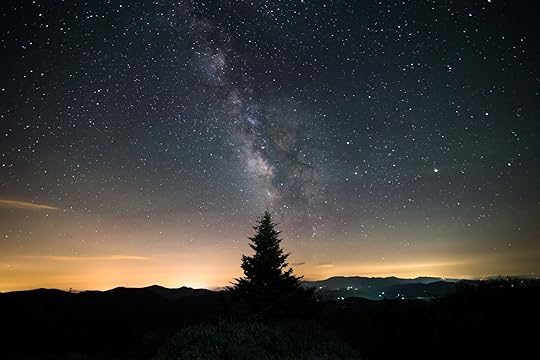
Photo: Serge Skiba/Shutterstock
South Holston Dam Spillway Trail, BristolSouth Holston Dam Spillway Trail in Bristol is a moderate 3.5-mile round-trip trail that offers scenic views of the surrounding area. Due to minimal light pollution outside of Bristol, it is a great spot for stargazing. On a clear night, you can see the Milky Way and constellations like the Great Bear and Orion.
South Holston Dam Spillway Trail: 918 Holston View Dam Road, Bristol, TN 37620
Osborne Farm by the Appalachian Trail, Shady ValleyOsborne Farm was acquired by the United States Forest Service in 2001. Covering a half-mile stretch along the Appalachian Trail, this area of open fields with minimal obstructions provides excellent conditions for stargazing. It’s worth coming before dark to enjoy the panoramic views as the sun sets.
Osborne Farm by the Appalachian Trail: 3372 TN-91, Shady Valley, TN 37688
Roan Mountain on the Appalachian TrailRoan Mountain, straddling the border between North Carolina and Tennessee, is a section of the Appalachian Trail home to some of the darkest skies in the eastern US. This makes it a perfect spot for stargazing, offering a breathtaking view of the Milky Way, constellations, planets, and even meteor showers, depending on the time of year. Several open areas on Roan Mountain, including Round Bald and Carver’s Gap, provide clear views of the dark night sky. You can hike half a mile up to Round Bald on the Appalachian Trail for even better conditions. Just be sure to have a redlight head torch.
Roan Mountain on the Appalachian Trail: Nearby city: Elizabethton
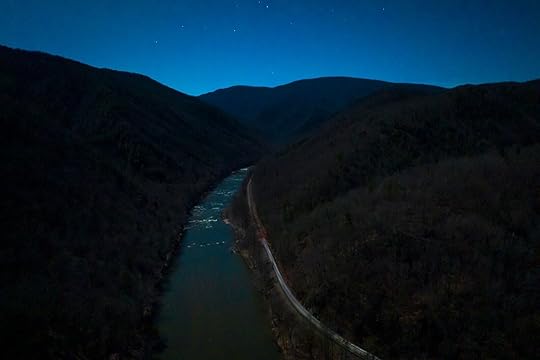
Photo: Johnson City Aerial Photography
Chestoa Recreation Area, ErwinChestoa Recreation Area is within Cherokee National Forest, away from major sources of light pollution. Scouting for an open area with minimal obstructions is key here, so visit the forest during the day to plan where you’ll set up your viewing. Near the Nolichucky River, there are picnic tables, grills, changing rooms, and restroom facilities. It’s also an excellent fishing spot.
Chestoa Recreation Area: 4 Jones Branch Rd, Erwin, TN 37650
Winged Deer Park, Johnson CityAway from the lights of Johnson City, Winged Deer Park’s lakefront offers incredible views from its two public parking lots, which are open until 9:00 PM.
Winged Deer Park: 4137 Bristol Hwy, Johnson City, TN 37601
Tri-Cities Airport Observation Deck, BlountvilleTri-Cities Observation Deck provides panoramic views of the night sky. Accessible by elevator or stairs, you can enjoy the stars as airplanes take flight into the night sky.
Tri-Cities Airport Observation Deck: 2525 TN-75 Suite 301, Blountville, TN 37617
Where to stay in near Tennessee’s stargazing spotsWe hope you love the Airbnbs we recommend! Just so you know, Matador may collect a small commission from the links on this page if you decide to book a stay. Listed prices are accurate as of the time of publication.
Elegant mountain home with indoor pool in Sevierville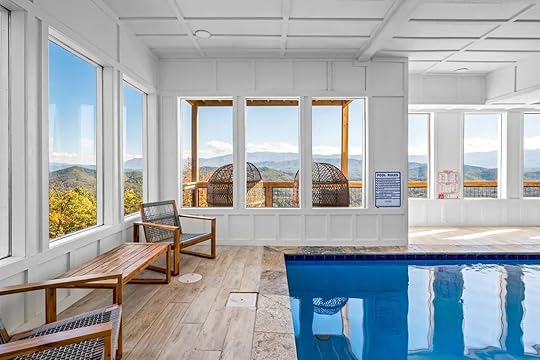 Photo: Airbnb
Photo: Airbnb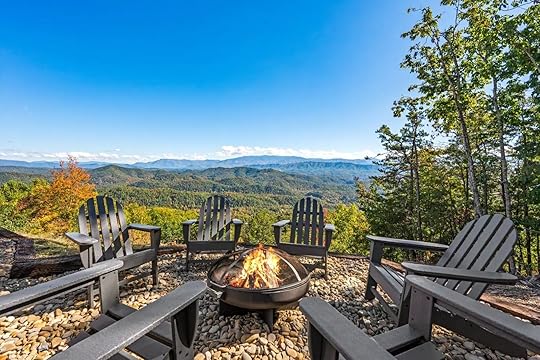 Photo: Airbnb
Photo: Airbnb Photo: Airbnb
Photo: Airbnb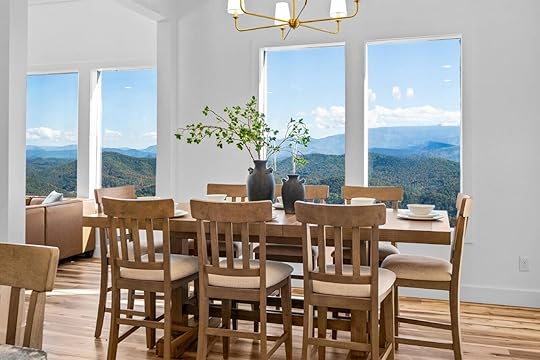 Photo: AirbnbSee more photos
Photo: AirbnbSee more photosSevierville is a fantastic base for a Tennessee stargazing road trip. It is also near Great Smoky Mountains National Park, which has exceptional dark skies. This stunning new mountain home is near Sevierville and has some of the best views in the area. These can be enjoyed from the house’s indoor pool, hot tub, fire pit, and generous windows.
10 guests, four bedroom
Price: $399 per night
 Photo: Airbnb
Photo: Airbnb Photo: Airbnb
Photo: Airbnb Photo: Airbnb
Photo: Airbnb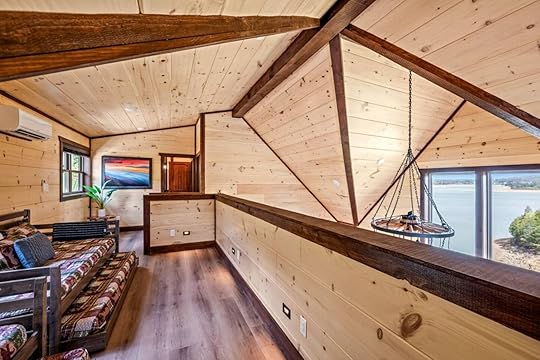 Photo: AirbnbSee more photos
Photo: AirbnbSee more photosThis lakeside lodge overlooks Douglas Lake and can accommodate up to 12 guests, making it one of the better rentals in the area if you’re traveling with a large group of friends or extended family. The Airbnb has stunning views over the lake, an indoor swimming pool, a hot tub, a fun-packed games room, a private theater, spacious living areas, multiple viewing decks, and direct access to the lake where you can rent watersport equipment.
12 guests, five bedroom
Price: $291 per night
 Photo: Airbnb
Photo: Airbnb Photo: Airbnb
Photo: Airbnb Photo: Airbnb
Photo: Airbnb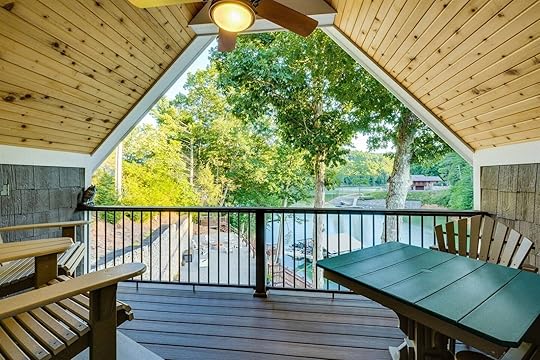 Photo: AirbnbSee more photos
Photo: AirbnbSee more photosOn the edge of Watauga Lake, surrounded by the Cherokee National Forest, this waterfront Airbnb has a private dock, hot tub, kayaks, paddleboards, a fire pit, and a sprawling balcony. The affordable vacation rental is one of the best in the state. From here, you can watch the sunset over the forest before enjoying the nearby dark skies.
10 guests, three bedroom
Price: $319 per night
 Photo: Airbnb
Photo: Airbnb Photo: Airbnb
Photo: Airbnb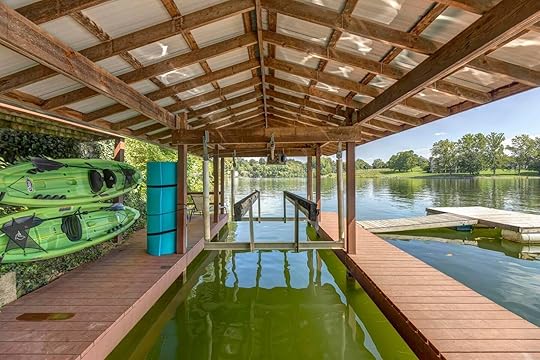 Photo: Airbnb
Photo: Airbnb Photo: AirbnbSee more photos
Photo: AirbnbSee more photosThis four-bedroom, three-bath cottage is on the edge of Boone Lake, a popular destination for fishing, boating, and other water-based recreation activities. The house has great outdoor living spaces, including a screened-in dining area, patio, and a hammock, where you can relax and enjoy the peaceful lakeside location. 
10 guests, four bedroom
Price: $333 per night
April 25, 2024
The 15 Most Remote Dark Sky Places in the US for Uncrowded Stargazing

If you live in or near a city, you’ll be used to looking up to a hazy night sky. Light pollution from artificial lights, from streetlamps to billboards, washes out starlight, hindering our ability to see stars and fainter celestial objects like nebulae, galaxies, and comets. The further from populated areas you go, the darker the night sky will become. With this comes a sense of peace and solitude, ideal conditions for sitting under a star-studded sky on a warm summer evening. So where do you go? To help you plan your next US stargazing trip, the accommodation booking site HomeToGo has ranked the most remote dark sky places in the US.
HomeToGo’s 2024 Stargazing Index, inspired by the recent total solar eclipse in April, is a research-driven curated list of the best stargazing destinations across the US. The index identifies 24 stargazing spots in nine states: Arizona, California, Colorado, Florida, Idaho, Illinois, Indiana, Texas, and Utah. These communities prioritize minimal light pollution, ensuring an exceptional view of the night sky. Each location was ranked for factors such as how well-known the place is, how much it costs to visit, the clarity of the night sky, and a solitude score.
The HomeToGo Stargazing Index’s solitude score highlights a crucial factor for prime stargazing conditions. A high result indicates minimal light pollution, allowing for a clearer view of the night sky. Locations with a high solitude score often have open and unobstructed horizons, maximizing the visible area of the sky. And solitude translates to a more peaceful and immersive stargazing experience. Less light pollution and fewer crowds create a tranquil environment ideal for appreciating the beauty of our night sky.
These are 15 of the most remote dark sky places in the US for uncrowded stargazing:
Beverly Shores, IndianaBlanco, TexasBorrego Springs, CaliforniaTown of Castle Valley, UtahCottonwood, ArizonaCrestone, ColoradoDripping Springs-Wimberley, TexasGroveland, FloridaHorseshoe Bay, TexasJonestown, TexasJulian, CaliforniaRidgway, ColoradoSedona, ArizonaTorrey, UtahWestcliffe & Silver Cliff, ColoradoCheck out Matador’s calendar of every stargazing event in 2024. Whether you’re a beginner stargazer with little equipment or a seasoned astronomer, there’s every date you need to put on your astronomy calendar. All you need to do is head out to a remote spot to enjoy it. 
Türkiye’s New Sleeper Train Will Take You to Cappadocia and Beyond
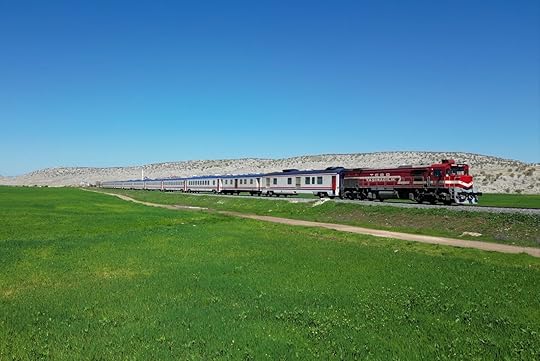
Istanbul is undeniably the most well-know part of Türkiye, but it’s far from being the only one worth visiting. If you’re keen to explore the country further but want to keep your carbon footprint down, you can opt to travel by train. The rail network in Türkiye is relatively extensive, with high-speed trains linking Istanbul to Ankara, Konya, and Sivas, local trains, long-distance routes, sleeper trains, and even touristic trains covering large swathes of the country. The Mesopotamia Express, a sleeper train that travels 653 miles across Anatolia is Türkiye’s latest touristic, long-distance sleeper rail offering.
The Mesopotamia Express is a sleeper train which operates between Ankara to Diyarbakır, a journey of over 650 miles. The route includes stops in Kayseri, the historical capital of Cappadocia; the ancient city of Malatya; and Elazığ, famous for its vineyards and orchards. Passengers have three to four hours in each stop, giving them ample time to explore the area.
The Mesopotamia Express can accommodate up to 180 passengers in nine sleeper cars. Each cabin can welcome up to two travelers and include seats that convert into beds, a sink, a refrigerator, and a closet. There is one dining car on board where Anatolian cuisine is served, including kebabs, baklava, and more traditional dishes concocted with locally sourced ingredients.
The cost of riding the Mesopotamia Express start at $277 (9,000 TL) for a room in a sleeper car on the Ankara-Diyarbakır route, and $246 (8,000 TL) on the Diyarbakır-Ankara route. The best way to book a trip on this train is to download the Turkish State Railways, AKA TCDD app.

The Mesopotamia Express’ inaugural journey took place on April 19, 2024, and was followed by a return trip to Ankara on April 21, 2024. The train departs every Thursday from Ankara at 3:55 PM. 
US Tourist Faces 12 Years in Caribbean Prison After Not Emptying Bag From Previous Trip
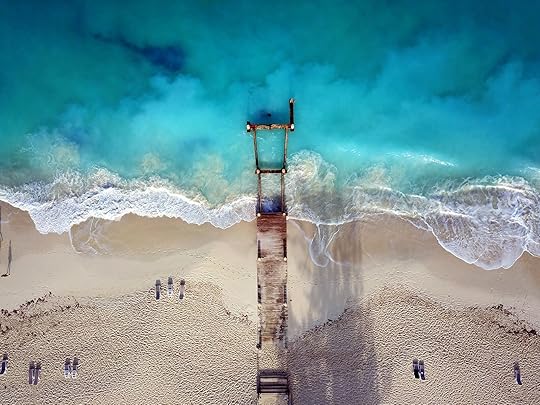
The typical piece of luggage sees a lot go in and a lot come out. Ideally, the bag is emptied entirely after each trip, or at least before the next trip. If not, travelers may inadvertently end up bringing something prohibited into another country.
A man from Oklahoma, Ryan Watson, went on a vacation to Turks and Caicos and is now facing a 12-year prison sentence after he claims he unintentionally left bullets from a previous whitetail deer hunting trip in the luggage he brought to the island. Watson was visiting the island with his wife, Valerie, as well as friends for a 40th birthday celebration. Airport security searched Watson’s carry-on bag as they prepared to return home and found the Ziploc bag of ammunition, according to Global News. While both were initially detained and had their passports confiscated, Valerie has since been let go and is back at home with the couple’s kids.
Watson told Today that he thought his duffel bag was empty before leaving. He also said that he doesn’t recall putting the ammunition in the bag, “but somehow they ended up in there” — and stayed there through to the end of their trip for Turks and Caicos airport security to find.
Turks and Caicos has a 12-year minimum sentence for ammunition possession, regardless of whether there was criminal intent or not.
@nbc10boston We spoke to Ryan and Valerie Watson, who were arrested in Turks and Caicos Islands for allegedly violating the British Overseas Territory’s strict ammunition law. “This was a complete innocent mistake,” said Ryan, who remains there, unable to return to his kids over hunting rounds he says he’d forgotten to take out of his bag. More in the #linkinbio. #nbc10boston #caribbean #news #video #fyp ♬ original sound – NBC10 Boston
Watson isn’t the first American to be held for an ammunition charge in Turks and Caicos since the island tightened its firearms laws in 2022. Three Americans are currently on bail for ammunition or firearms charges, and eight prosecutions have taken place. Last September, the US embassy in the Bahamas issued a travel alert after Michael Grim was detained for ammunition possession.
Each country has its own laws and regulations. An infraction that could be a slap on the wrist in the United States may have drastically more severe consequences elsewhere. Drugs and weapons that are legal in the US top that list, though even something as small as a piece of food could lead to hefty fines. It can be easy to miss something small floating in a pocket or the bottom of a bag, but luckily there’s an easy way to avoid the issue entirely: always unpack completely and double check your bag is empty before packing for your next trip. 
Matador Network's Blog
- Matador Network's profile
- 6 followers



